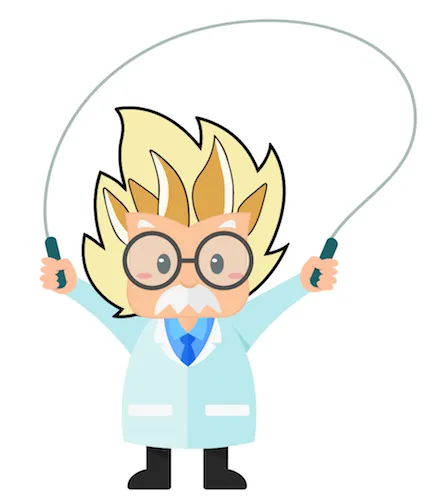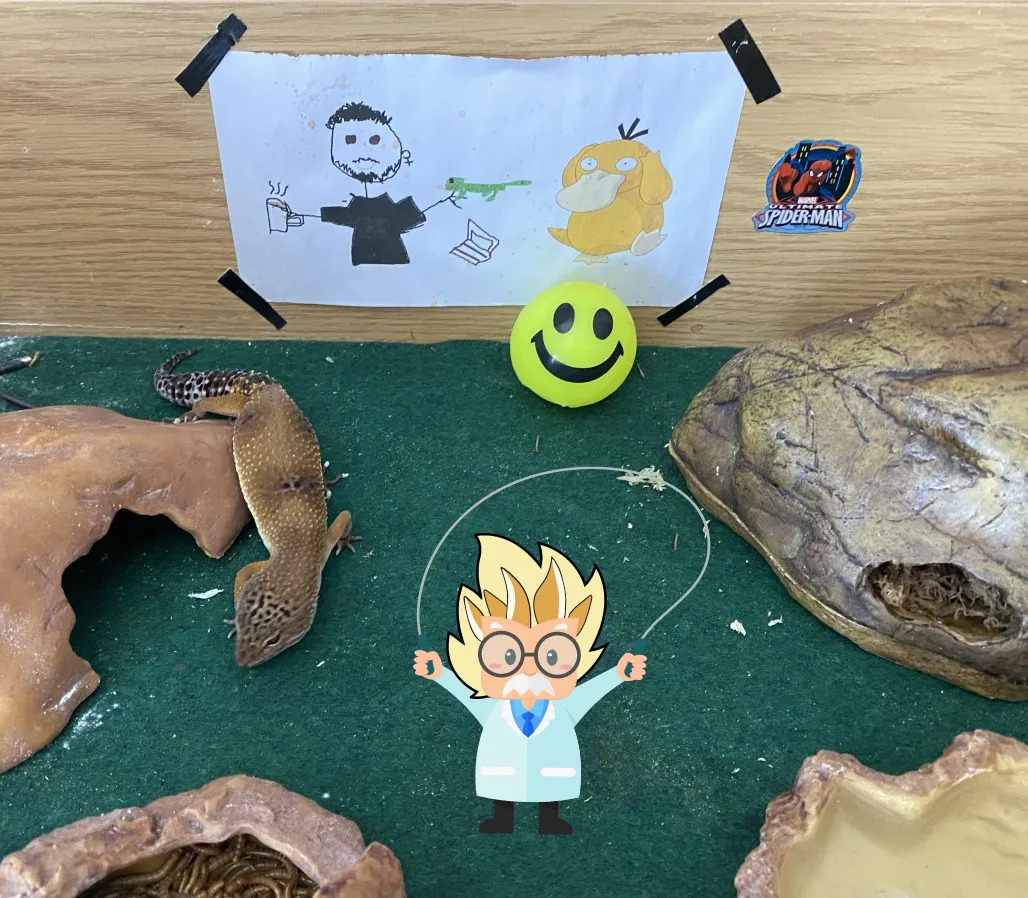My journey of memorising a deck of 52 shuffled cards

In this blogpost, I share my journey of memorising a deck of 52 shuffled cards using the PAO system and Memory Palace technique.
A few years back, I wanted to read a book about memory and found the best-selling book “Moonwalking with Einstein: The Art and Science of Remembering Everything” an ideal choice. I won't go into too much detail about the book which is a great read, if you don't trust me, trust Bill Gates, who called the book "absolutely phenomenal"". But let me give you a brief sequence of events from the author and journalist of the book, Joshua Foer:
- It starts by observing the extraordinary accomplishments of mental athletes at a memory championship.
- Foer meets Tony Buzan, the trim 67-year-old English self-help guru who founded the World Memory Championships in 1991 and who insists the brain is "like a muscle": exercise it and it gets stronger.
- Foer learns the art of memory training.
- He practices his memory muscles for 1 year with help of a shambling 24-year-old from Oxford who becomes his mentor.
- He then finds himself in the finals of the US Memory Championships, alongside 'mental athletes' who could memorise the precise order of ten shuffled decks of cards in under an hour.
If you're interested, here's a nice review on the book.
My thoughts after reading book
After finishing this book, more than anything I was curious. Unlike Joshua Foer, I didn't want to dedicate a full year to the cause, but I still wanted to give it a go so I could look back and think: "Here's something pretty useless for the day-to-day. Yet, how cool is that I can memorise 52 random cards?"".

For people who know me, they know how much I hate to leave things unfinished. Whether that's a task that I set myself, or 'just' not leaving any pizza leftover. Therefore, I knew that if I really wanted to do this, I'd have to set aside time for it, and so I did. The text under is my journey to memorise a shuffled deck of 52 cards.
Technique (PAO + Memory Palace)
The mnemonic "Memory Palace" technique that I was about to use was referred to on the aforementioned book. The ancient mnemonic technique was first practiced by Simonides of Ceos over 2,500 years ago. When googling the term, the definition is:
A Memory Palace is an imaginary location in your mind where you can store mnemonic images. The most common type of memory palace involves making a journey through a place you know well, like a building or town. Along that journey there are specific locations that you always visit in the same order.
The mnemonic images would be conceived using the famous PAO system. This term means:
The Person-Action-Object System (or "PAO" System) is a popular method for memorising long random numbers and decks of playing cards. … Some people assign arbitrary images to the numbers without any phonetic conversion. The digits are usually chunked in 2 or 3 digits and then placed into loci in a Memory Palace.
The idea is to take advantage of what we humans are best at, photographic memory.
The journey of memorising a shuffled deck of 52 cards
1. Create your own personal PAO system.
For each card of the deck you have to have an associated Person, Action and Object. It's useful to have the least possible rules, and have these intersecting simultaneous cards, so that there's less to memorise. Here's how I did it:
- Define a category for each suit (e.g. Hearts represents friends)
- Define something for each type.
- From 1 to 10 I've defined the starting letter of the person (e.g. Card 7 represents a person with name starting with letter K or C).
- For the court (Queen, Jack, King) I've defined them as a powerful male/female. (e.g. King is the GOAT of the category).
Below you can see what the table looks like:

Note: The Person is the main existing link, hence it needs to be something that you think of immediately when the category and the type of the card is known.
I had to change my cards several times as some of the PAO's I had weren't memorable enough, either because the name was too common, or because I didn't relate that much to this person.
2. Memorise each card with it's PAO system
Once the table above is filled in, the next step is to associate each card with it's Person-Action-Object. I find that as long as you can remember the person name of the card by doing the cross between category and type, the action-object comes easily.
For instance:

Jack ♦: Einstein — Writing Equations — Blackboard
- When I see a Diamond, I know we are in the Celebrities category. Since this is a Jack I know it's an important person. I've selected Musk to be my GOAT, so this has to be Einstein. The writing equations and blackboard comes trivially when thinking about Einstein.
8 ♣: Floyd Mayweather — Skipping — Rope
- When a Club appears, I know we are in the Athletes category. Since this is an 8 I know the name starts with an F or V. This promptly reminds me of Floyd. The skipping and rope come immediately, due to my own personal experiences from improving my skipping skills and looking at videos of Mayweather. I find that the more the personal and creative you get with this, the easier it is to remember.
King ♠: Goku — Powering up — Blonde Hair
- If I see a Spade, I know we are in the Cartoon category. Since this is a King I know that this character is the GOAT. Which immediately triggers my brain to Goku, since it used to be my favourite cartoon as a kid. Trivially, comes the powering up as action, and the blonde hair as object.
In order to remember all the cards, my trick was to have a deck of cards where on the back of each card I wrote its own PAO. So that if I didn't remember, instead of looking at the table, I could look at the back of the card. However, I find it important to sometimes not quit trying to remember immediately, as when you initially struggle to remember a card, when you eventually do, your brain retains this information so much better.
Note: At this step you may realise that you keep forgetting the same PAO card. I recommend you going back to step 1 and re-defining it. Once I did this to the cards I kept forgetting, I was in a much better position.
3. Create your own memory palace
This is the easiest step. I used the house I grew up in in Portugal, and decided to place 4 PAO instruments (i.e. 12 cards) per house division. Meaning that by the time I was in the first room upstairs, I was already 36 cards down the deck.
Since I'm not living in Portugal, let me show you what I mean by using a picture of my current living room in London. The spots I would select in here would have been: 1. Top of table with candles; 2. Top of side table; 3. Inside my gecko's vivarium; 4. As a program on the TV.

Note: Make sure you always remember your memory palace spots, otherwise you may overlook them once looking for the next 3 set of cards. The way I think about this is imagining that I lost my keys, and mentally going back in time to try to understand where they could be.
4. Practice memorising each set of 3 cards PAO
This is where the creativity comes in. When picking 3 cards from the deck, you picture the Person of the 1st card, the Action of the 2nd one, and the Object of the 3rd one.
Let's imagine we've got the cards aforementioned.
- Card 1: Jack ♦
- Einstein — Writing Equations — Blackboard
- Card 2: 8 ♣
- Floyd Mayweather — Skipping — Rope
- Card 3: King ♠
- Goku — Powering up — Blonde Hair
In my brain, this would lead to

**Note: At this point you may realise that some combos of cards don't work well together. **If this is bad enough to not make you remember the 3 card PAO, I recommend updating your PAO system to something that's easier to generalise.
5. Place each 3 cards PAO onto the memory palace
For instance, if I were to place the Einstein Skipping with Blonde Hair on the 3rd spot of my living room (my gecko's vivarium), in my head, I would picture something like this:

Note: I recommend trying to have the 3 card PAO interacting with the environment to improve memory. In this case, I would have thought about the Blonde Skipping Einstein having to do skipping so fast that the gecko coudn't come close because the rope was going too fast. The more original/different, the more chances you have to remember this scenario.
6. Re-iterate the memory palace with new 3 card PAO every time
Instead of memorising a new 3 card PAO in a memory palace location and then moving on, I always go back to the start and think about all the previous 3 card PAO's from start. This will ensure you don't forget the oldest 3 card PAO. In fact, it will make it so that the oldest 3 card PAO are repeated more times than the newer ones, so it's all balanced out.
7. Practice and Practice
I found out that after memorising my PAO system (which took a long time) and the memory palace, it was fairly easy to memorise the shuffled 52 deck of cards. However, it was taking me way too long to memorise it AND say it out loud.
Once I started practicing more and more time started decreasing. The last time I tried, I managed to do it under 10 minutes, which is not great but I'll take it. As I mentioned, I just wanted to be able to do it, I didn't care much about the time.
Also, I still needed to think about the category + type of the card every-time, I think the time to memorise the deck of cards decreases exponentially once you actually associate each card image to it's PAO. But for that you need to practice more, which for me was getting boring.
...
This is a different post than the ones I usually do, but I find it extremely interesting. Hence why I was keen on sharing it.
Let me know if you've heard about it, or want to give this a go.
Thanks for reading!